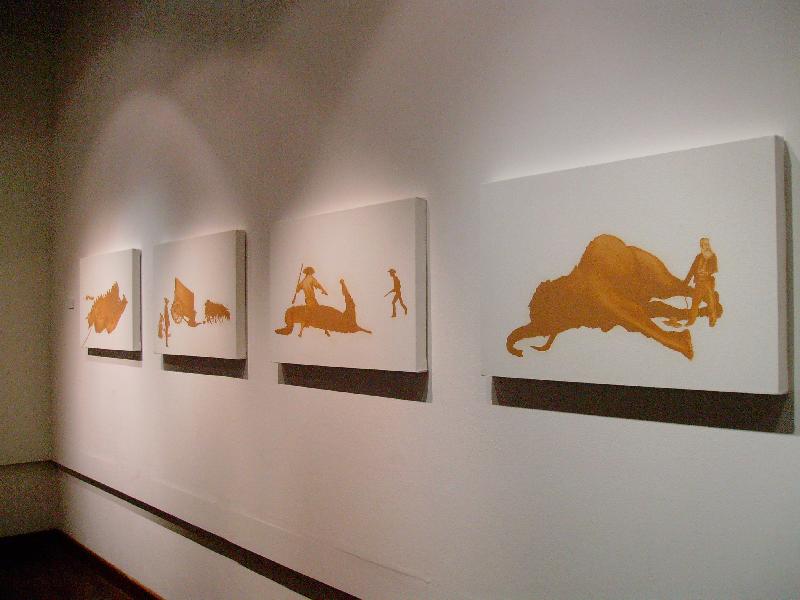
Grahamstown’s art aficionados flocked to an intriguing exhibition by a talented young artist and Master of Fine Art candidate in the Rhodes Fine Art Department. ‘After Baines’ is a poignant exploration of post colonial landscapes, and what it means to be a young white male artist in the Eastern Cape today.
What does whiteness entail in the wake of legendary explorer, artist and colonist Thomas Baines?
Painter John Walters parodies and frames classical works by Baines within his own creative headspace. This uniquely site-specific exhibition is itself framed within the halls of the Albany Museum, whose inner vaults still house works by Baines himself. The museum is also an important hub of knowledge about the early English explorers in the province.
The father of this promising young artist, Prof Paul Walters is one of the celebrated educators at Rhodes’ English department, and he welcomed the crowd to this memorable event with wit, warmth and artistic insight.
Like Baines’ art these works are devoid of vivid colour, but with one critical
difference: The addition of a provocative, almost grotesque ‘white skin colour’ tone. This pinkish hue gratuitously permeates the images, yet it is applied with an accomplished subtlety of technique and an immaculate, aesthetically balanced attention to detail.
Interestingly Walters imitates and integrates both images of Baines and representations of his works but with the crucial distinction of the emphasis on whiteness.
The exhibition, which is the culmination of three years of work for Walters, is divided into 3 parts: ‘Before’, ‘Genesis’ and ‘Tableau’.
‘Before’ is a series of 10 digital inkjet prints on canvas. These prints appear at first glance to be charcoal drawings, again raising ambiguities of past and present. Baines’ works were seen as scientific records rather than art and this series probes notions of the subjective and the objective. The imperial gaze and the old Eurocentric idea of Africa as a kind of idyllic Eden populated by noble savages are also explored.
‘Genesis’ comprises seven panels, each presenting a facet of the Genesis that was the colonisation of Africa. Walters sees his art as a performance in time as well as space, and to create each panel in ‘Genesis’ he allowed himself just 24 hours. In this series Baines himself becomes colonised by the artist. In the final panel we see Baines holding a frame in front of his face and the ubiquitous veil of whiteness colours the features within.
In ‘Tableau’ the scale of the paintings is dramatically increased. This final series comprises three huge very realistic paintings of Baines. We see tantalising glimpses of his original work incorporated within. Once again the blandness of black and white is infiltrated by the strange colour of European skin. This could easily have been garish, but John Walters’
painterly skill has resulted in rather attractive works which capture the haunting, inescapable presence of Grahamstown’s colonial past.
This exhibition uses painterly enquiry to inspire thought and imagination around notions of race, space and history. It is currently on display at the Albany History Museum’s Alumni Gallery.
For more information click here
